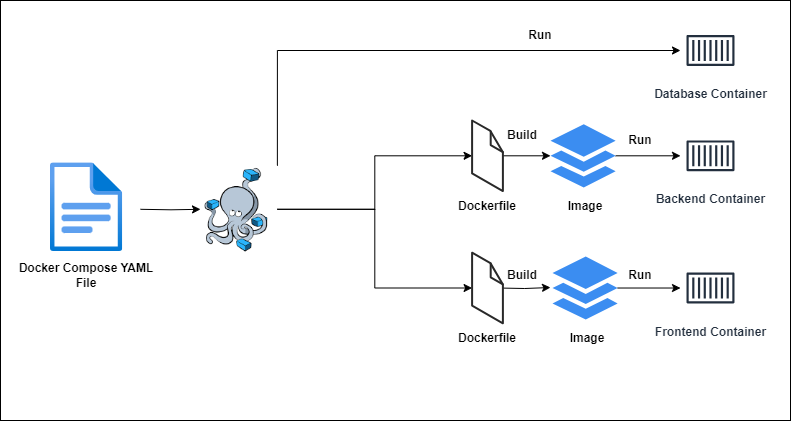Different Types of Docker Services
Last Updated :
16 Apr, 2024
Docker is a containerized tool used to closely pack the application and its dependencies into compact units called Docker containers. Docker provides various services like Docker Registry, Docker Engine, and Docker Swarm. In this guide, I have first discussed what Docker is. Then I discussed the different services provided by Docker.
What Is Docker?
Docker is a powerful tool used to containerize the application, which means packaging the application with its dependencies into compact units called Docker containers. These Docker containers contain all the application code, runtime, dependencies, and other libraries that are needed to run the application. Initially, the developers write a simple Dockerfile for the application. Here in the Dockerfile base image, the work directory commands to install dependencies, and commands to run an application are mentioned. After this, the Docker file is built by using the docker build command to generate a Docker image. By using this Docker image, the application can be run on any machine; the only condition is that Docker should be installed on that system. Also, the Docker images are lightweight and portable. Docker containers mostly consume fewer resources in a system. This means multiple Docker containers can be run on a single machine. This results in the maximum utilization of a machine’s resources and also a decrease in the overall cost of the infrastructure. In summary, we can say Docker has become an important tool for the organization for software application development and delivery pipelines.
Different Services Provided By Docker
1. Docker Registry
A Docker registry is used to store Docker images with specific names and tags. Multiple versions of the Docker image can be stored in the Docker registry. The Docker registry is used by users to push and pull different Docker images. The Docker registry helps in the easy sharing and distribution of Docker images. By using the Docker registry, we can automate the deployment process. There are different kinds of Docker registries. For example, Dockerhub, Amazon Elastic Container Registry, Google Container Registry, and Azure Container Registry. Here, the users upload the Docker images to Docker registries with various tags, and other users can access these Docker images easily. In summary, we can say that Docker registries are widely used by developers and organizations for easy distribution and access to Docker images.

2. Docker Engine
Docker Engine is the underlying technology used for building and running a containerized application. Docker Engine consists of several components like Docker Daemon, Docker CLI and REST API. The Docker daemon used for creating and managing the docker images. The command line interface (CLI) helps the users to interact with the docker daemon to create docker images , docker containers, docker networks and docker volumes . The REST API is used for interacting with docker daemon by using several programming languages like Go and Python. These allows you to build and run docker apps efficiently.

Docker Engine
3. Docker Swarm
Docker Swarm is a container orchestration platform used for managing and scheduling multiple docker containers. Docker Swarm simplifies the deployment, scaling and managing of Docker containers. It consists of two types of nodes that is manager and worker nodes. Manager manages the swarm and schedules the containers on a cluster. Worker nodes helps in executing the swarm services that are assigned to them. Docker swarm allows configuration updates on services without manual restarts. Swarm uses ingress to expose its services for external access. Overall we can say Docker Swarm simplifies the process of deploying and managing containerized application. Its key features like load balancing, high availability, scalability, security and easy deployment make Docker Swarm one of the popular choice to orchestrate containerized applications efficiently.

Docker Swarm
4. Docker Compose
Docker Compose is an essential tool for managing multi docker container applications . Docker Compose files are written using YAML language . Here in the YAML files all the configurations, services, docker volumes, dependencies and other environment variables are mentioned so that the entire application can run smoothly. A single command `docker compose up can start building the docker images and run the application in the port specified. In this way it saves time and effort in the development process, which leads to increase productivity and efficiency. As the building and running the applications has become more easy, developers can focus more to improve the application logic. In summary we can say Docker Compose is a vital service provided by Docker, which simplifies the complex application running process, accelerates the development cycle and deployment process.

Docker Compose
Conclusion
Here in this guide you have learned what is Docker. Then you have learned about the different services provided by docker. Here you have learned what is docker registry and also different kinds of docker registries. Then you have learned about docker engine and how it helps in building the docker images. Finally you have learned about docker swarm and how it is used to orchestrate the docker containers.
What Are The Different Types Of Docker Services ?-FAQ’s
What are the the different docker registries ?
Docker hub , Amazon Elastic Container Registry, Azure Container Registry and Google Container Registry are the different docker registries.
What is the importance of docker registry ?
Docker registry makes the easy share and distribution of docker images. Also these registries can store various versions of docker images .
What are the different docker engine components ?
REST API, Docker CLI and Docker daemon are the key components of docker engine.
What is the limitation of using Docker Swarm ?
Docker Swarm can only used for managing and orchestrating the docker containers.
What are the different services provided by Docker Swarm ?
Docker Swarm provides replicated and global services.
Share your thoughts in the comments
Please Login to comment...